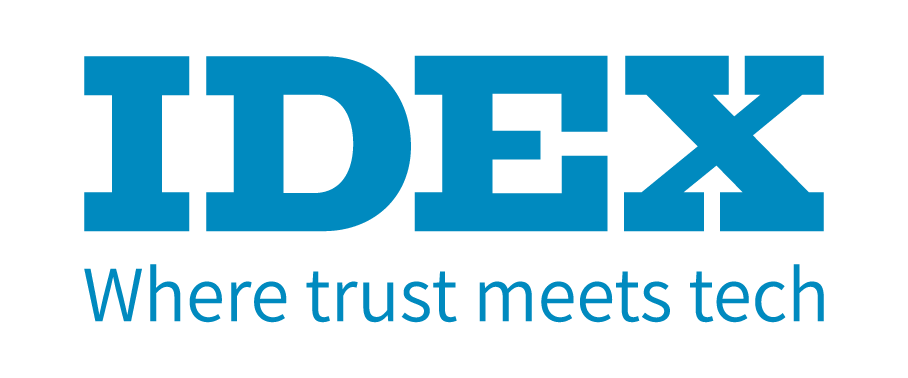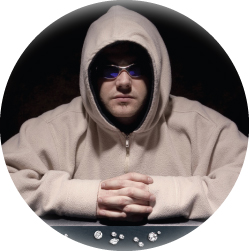Clever Technology
November 01, 09
Sometimes there’s nothing like new technology for taking the brunt work out of business or for adding an extra element of security to a transaction. Check out some of these clever uses of technology – and get your thinking caps on. There’s definitely room for further innovation.
Good Vibrations
A community based on socialism and farming is not the typical source for diamond counting solutions, however, Kibbutz Ramat Rachel, located near
"Our first machines were produced to count rough diamonds, to keep stock and [for] inventory control," explains Nir Yoel, sales manager Asia-Pacific at Data Tech. “These were very simple and rugged machines. But then we realized that there's a need down the pipeline for polished as well – the need for counting goods [quickly] and accurately."
The Data Tech machines offer jewelry manufacturers the ability to count large quantities of small stone rapidly, and even to sort them. Jewelry manufacturers, who often use large numbers of small diamonds for setting, need to be able to count them quickly and accurately and this is where the machines the company produces comes in.
Their newest tool is the Vibe 130, which is named for its size in millimeters and the way it weighs the stones – by vibration.
"It is the most accurate mobile weight in the market, giving the weight in two seconds," sas Yoel.
In fact, what the Vibe 130 does is offer the mass of the stones being measured, rather than their weight. (Listen up, this is the science bit). Owing to gravity, any object being weighed will have a different weight depending where the measurement is taken. For an extreme example, a person weighing themselves on earth will have a weight six times their weight on the moon. Slight, but at times important weight variations, happen depending on how close people are to the earth's core, so at Mount Everest, the highest point on earth, an object will weigh less than at the
By weighing mass rather than weight, the Vibe 130 isn't affected by environmental attributes, meaning it doesn't need to be operated in sterile conditions. “Simply, the idea is that the Vibe 130 holds the stone and once the holder is opened, the machine vibrates, and vibrates again when the stone is held,” says Yoel. “It then calculates the difference between the vibrations to produce the mass of the stone. It allows freedom from having to contend with external conditions and variants.”
Light My Fire
Marking its own successful niche in the diamond business is GemEx Systems Inc. The company sells machines that are able to analyze and then certify a diamond's brilliance, fire and sparkle – all important buzz words in the jewelry retail business.
"[When] buying a diamond, the 4Cs are often not only confusing for the consumer, but also intimidating for the sales associate,” says Randall M. Wagner, president and CEO of GemEx. “When the sales associate focuses on brilliance, fire and sparkle, they speak the consumers’ language, and it is much easier to explain. Thus they are immediately more confident."
Talking about the development of the technology to measure these concepts, Wagners explains that in the late 1990s he had been working on technology for the colored stone industry. "The announcement of the AGS laboratory cut grade sparked a debate over what was the best diamond cut. I felt the debate could be easily resolved by just measuring the amount of light coming out of the diamonds. Find the diamond with the best light response and you have the answer.”
However, he discovered when he asked around that no one knew how to measure light response. “I realized that the technology we had developed and patented for colored stones could actually do just that. So Kurt Schoeckert [GemEx co-founder] and I modified the GemSpec® and created the [GemEx] BrillanceScope® for diamonds."
| |
Gemex uses a variety of lighting options to assess the actual brilliance of a stone to best answer just how much fire the stone has. The company’s BrillianceScope Analyzer machine takes five images at five different lighting stops and then analyzes the results. The systems then gives an evaluation of the stone's brilliance based on the readings.
Using the machine prevents any chance of the stone being seen as dull or lacking fire, if it indeed possesses it, because on the particular day a customer visited the store the skies were gray and cloudy. A good brilliance result gives retailers an added tool because consumers can not only see the fire of a stone but also receive a confirmation of it.
Screening Out Fraud
Fraud is a constant threat to the legitimate trade in jewelry, diamonds and gems. There are constant attempts to alter the original state of these items to improve their appearance, which, if undetected, will increase their value and cost. But there is hope in the fight back against fraud.
HRD Antwerp for example, distributed its D-Screen to all diamond bourses in the world after a fraud alert was issued in
The device is used to detect treated and synthetic diamond, allowing trader to test diamonds on the trade floor.
The D-Screen is a compact device able to distinguish between natural and synthetic colorless or near-colorless polished diamonds. The technology used in the D-Screen is based on optical measurement by projecting shortwave UV radiation through the diamond.
Diamantaires using the D-Screen will see an indication alerting them if the polished diamond is natural. It will also inform them if the stone was subjected to color-enhancement treatments. Synthetic diamonds and diamonds subjected to a HPHT-treatment are instantly detected by the device.
The D-Screen's range covers all polished diamonds from 0.2 carats up to 10 carats in the D-J color range. These ranges encompass the bulk of gem grade diamonds.
During a transaction, there is the need to protect the integrity of a stone so that there is no chance that it could be switched with a similar-looking, lower grade or even fake stone. The same is true for the Kimberley Process certificates and any other item that can be have its integrity questioned. This includes reducing the kartage in gold jewelry, or switching gems for pastes.
Diamond Exchange Ltd., an Australian online diamond retailer, has launched what it claims is a fraud-proof system for diamond certification. According to the company, the system makes it virtually impossible to fraudulently alter diamond certificates.
The company says it bases its technology on unique nanospheres packed with molecular codes and decoy molecules, impossible to reverse engineer.
It claims to have "uniquely merged molecular and nano-technologies creating a covert encryption spectral signature that can be embedded onto most products, documents and substrates.” According to the company, when this technology is combined with a two-dimensional covert barcode process, the overall system provides – among other features – more than 11 levels of security and 32 trillion codes variations.
For the diamond industry, the encryption system can be utilized in products such as diamond gemological and Kimberley Process certificates as well as general diamond and jewelry branding materials.
The covert barcode can only be read by a proprietary reader, ensuring a high level of data integrity.
